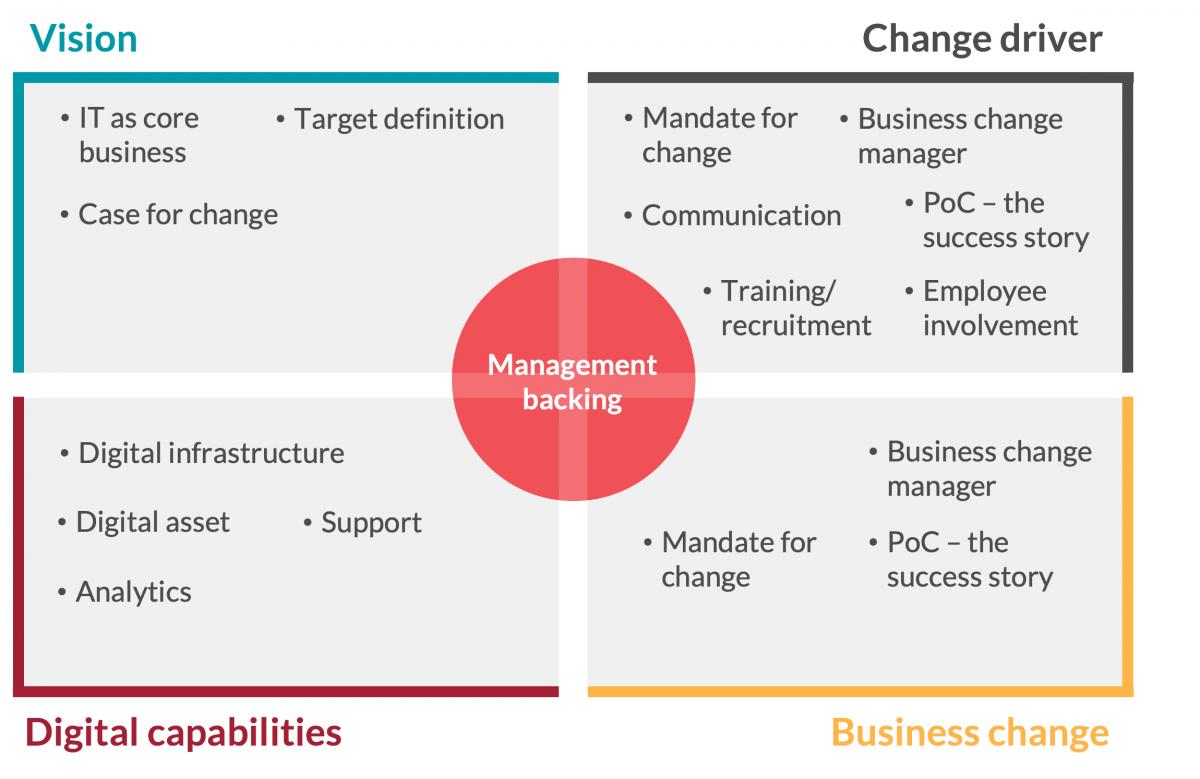(Re)organize to enable digital core business
To be successful in embracing and transforming your business into the digital era you will have to reorganize not only your IT portfolio and the way IT is organized and operated but rather you will need to reorganize the entire business around strategic digital core assets. However, in large enterprises it is simply not possible to wipe the slate clean and start from scratch.
Consequently, the digital transformation journey must start with a cross silo slicing of your business based on the process flow of strategic data assets. By bounding the slicing around the identified strategic core data assets, the scope of change is reduced, the reason for change is clarified and the probability of success increased. At this stage it is critical to:
- acquire management mandate and proper sponsorship,
- create and implement a communication strategy,
- ensure competence through recruitment, staff training, and
- implement coaching to drive role modeling of new behaviors.
Transforming your business to embrace digital services as core business (digital services is core business*), goes a step further than what most think of as traditional IT integration responsibilities. It is a fundamental organizational and operational change to create an IT environment that runs a new digital core business. As with any major transformation, it requires strong CEO leadership, quality teams, strong project management and communication, as well as value assurance.
Set up cross organizational (cross-silos), digital asset teams and a digital backbone team. A successful transformation is about putting the right people in place at this stage. Establish teams for two to three priority core digital assets. Typically, a digital asset team will start with 4-10 people, which can then quickly ramp up to any required size. It should include specific roles:
- Data asset owner—either a business or IT executive, or sometimes both as co-leaders; a digital asset owner should be able to act like a real “product owner,” a mini-business CEO with an IT engineering mind
- Business members, who share responsibility with the technical team for all the design and the ongoing management as a business
- Technical members, who manage all the IT applications associated with the digital asset and take full responsibility for modernization, renewal, ongoing feature development, and day-to-day operations
- Shared central resources with necessary functional skills, from analytics, marketing, engineering to finance.
- Digital backbone team with eight to ten of your very best IT and integration architects and operations staff to offer the digital backbone for connectivity to all digital asset teams.
*) You don't agree? Let’s talk about it: https://www.redpill-linpro.com/en/contact

To assist you in making this transformation we have developed a model identifying and supporting the key change areas that needs to be addressed for a successful digital transformation. This model is based on our hard earned experiences from the trenches assisting organization in becoming truly digital.



